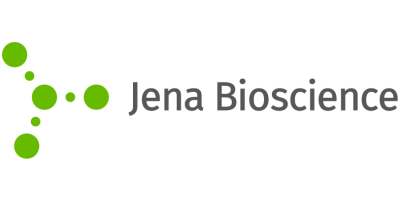

- Home
- Companies
- Jena Bioscience GmbH
- Videos
- Jena Bioscience | Crystallography: ...
Jena Bioscience | Crystallography: Impact of Crystal Mounting Method on Cryocooling & Diffraction - Video
www.jenabioscience.com/crystallography-cryo-em/data-collection/sample-retrieval-and-mounting In crystallography, labs often send hundreds of crystals off for data collection. Many crystals simply do not provide the data quality necessary to solve structures. Why do so many crystals diffract poorly? One cause is the use of outdated tools and methods during harvesting and cryocooling. Older loop designs allow crystals to be retrieved from drops, but have drawbacks that can impact results. First, older loops are made from non-X-ray transparent materials. Crystals are often mounted suspended within a large drop of fluid in the loop, such that the loop material itself can be kept out of the X-ray beam. This technique can be challenging to perfect and may lead to crystals being chased around in the drop, which can result in damage to crystals. Second, extra fluid left surrounding the crystal, often degrades the cryocooling process, slowing the crystals cooling rate and allowing more time for the growth of crystalline ice on and within the delicate crystal. Ice formation damages crystals, and lowers the quality of their diffraction. Finally, the extra fluid, and loop material often ends up in the path of the x-ray beam. Extra materials in the beam lead to more background scatter, washing-out the signal from the crystal. So how do crystallographers get the best possible diffraction from every crystal and avoid sending hundreds that do not diffract well? They start by choosing a loop that changes how crystals are mounted. MiTeGen’s patented family of MicroMounts and MicroLoops are manufactured from a highly x-ray transparent polymer into precise shapes and sizes using cutting-edge photolithography techniques. These X-ray transparent loops can go directly into the beam, so users select a loop size that is slightly smaller than the crystal. They then easily harvest the crystal, which sits directly onto the surface of the loop. This reduces unwanted fluid around the crystal, leading to easier cryoprotecting, faster cryocooling, and less ice formation. Crystallographers can abandon the technique of mounting crystals suspended within a drop of fluid. MiTeGen’s ultra-precise, x-ray transparent loops routinely provide faster, damage-free crystal harvesting, improved cryocooling and higher quality x-ray diffraction. With MiTeGen MicroMounts & MicroLoops and the “on-the-loop” mounting technique, crystal quality is preserved, generating better diffraction, with higher resolution, reduced mosaicity, and less background noise. In the end, structures are solved by the quality of diffraction you obtain, not by the number of crystals you send. Start solving structures using the most advanced method for crystal harvesting.


